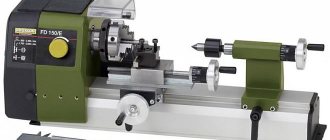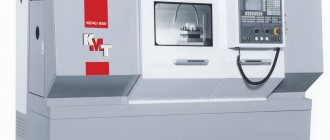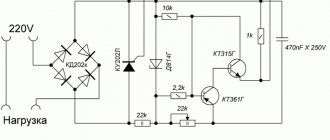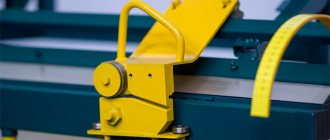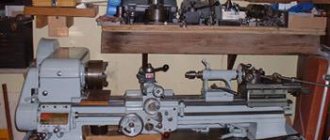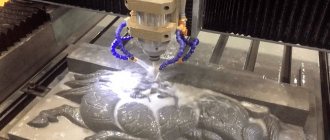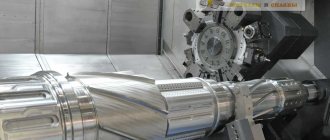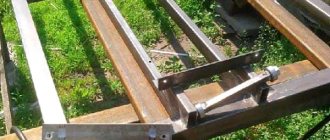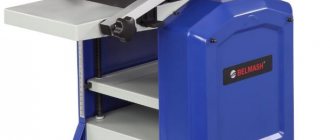Wood is a unique, environmentally friendly material, which makes it highly sought after and popular. Making products from this material is considered the height of craftsmanship in the world. Homemade woodworking machines are in demand among small entrepreneurs who carry out individual orders.
Having woodworking tools or a special machine at hand, it is easy to show imagination and skill in all directions - build a house, equip a summer cottage, make furniture and interior items.
In specialized stores, multifunctional machines are not cheap, so as an alternative, it is worth considering the possibility of making a woodworking machine yourself.
Selecting materials to create a device
Very often among home craftsmen there are those who try to make their own lathe from an electric drill.
The manufacturing process is not at all complicated, and to achieve the desired result you will need to take all the necessary materials to prepare them in advance. In the production of the machine, woodworking materials can be used, but you should be aware that with such devices you can only process small parts and workpieces, for example, make handles for knives, handles for furniture, etc. If you need a reliable sled that you plan to use very often, then it’s worth investing once and making it out of metal.
Lathe capabilities
Initially, I used a Soviet-made drill with thyristor speed control and a power of only 300 watts. It worked for me until the collector mechanism wore out for more than 30 years under various loads, including extreme drilling of concrete slabs. Rotary hammers were simply not on sale at that time.
This power is enough for leisurely small crafts. But for normal operation, it is better to use the design of a modern drill with at least 800 watts. The difference will immediately be felt.
For many types of work, high rotation speeds are not needed: you have to use a regulator. In this mode, the load on the engine increases, and a reserve of its power, and the entire structure, is simply necessary.
In order to increase the efficiency of the lathe, instead of a drill, I installed a three-phase asynchronous electric motor, giving it a capacitor start from a single-phase network.
This made it possible to turn long and strong workpieces like the handles of shovels and other country tools.
To attach the wooden workpiece to the engine, it was necessary to make a bushing with a locking screw on the rotation shaft and an W-shaped tip inserted into the center of the wood cut.
All the photographs show that my lathe was made a long time ago, and is stored in a workshop where humid air penetrates. Over the course of several years, clearly visible signs of corrosion appeared. Don't let this happen to your instrument.
If you are thinking about creating a lathe design for wood processing not from a drill, but from an asynchronous motor, then it is better to use a three-phase voltage of a standard value of 380 volts to power it. Power losses will be minimal.
For a single-phase 220 V network, you can connect a frequency converter, which will allow you to use all the power inherent in the design of a three-phase asynchronous motor. Such devices are available for sale at a very reasonable price. They are convenient to use on different engines.
When equipping a turner’s workplace, pay special attention to safety measures and the selection of electrical protection. Be sure to connect the electric motor only through a circuit breaker, which eliminates accidents associated with short circuits and overloads
The need to connect a power tool through an RCD is determined by local conditions. But in critical situations, protection is never superfluous.
The design of the tailstock can be improved by including a thrust bearing in the center, for example, size No. 607. The friction spent on rotating the workpiece will immediately decrease, and its combustion will be eliminated.
For a better understanding of the material, we recommend watching the video of the owner Dobry Gena “Do-it-yourself universal lathe from a wood drill.”
Useful products
- Magnetic bracelet - holder
- Souvenir coin for decision making
- Barista thermometer
Make or buy?
An electric drill is a ready-made drive, gear, spindle and chuck in a monoblock. Place it on the carriage of the machine and you can drill. In terms of accuracy, the solution, generally speaking, is not optimal (see below), but in many cases it is acceptable, but eliminates the need to order expensive turned parts of increased accuracy, see below. In view of this, frames for installing drills are now sold only on the street from trays; prices are affordable. When choosing one to make a drilling machine from a drill, be guided primarily by the operating mode of the equipment; The price also depends on it:
- Occasional drilling/milling for yourself with the accuracy of what you get - cast plastic bed or stamped steel. The feed mechanism is lever with a cranked lever (see below). Carriage sliding bearings (see below) are steel on steel or with nylon liners. Prices are $20-$30.
- Regular drilling for yourself or to order with ordinary machine-building precision. The materials processed are up to the hardness and toughness of ordinary structural steel. Everything is the same, but the sliding bearings are steel on steel (worse) or with bronze bushings, and the frame is cast iron or (more expensive) composite, also vibration-absorbing. Prices: $30-$40.
- Regular drilling and milling of any materials that can be tooled with periodic overloads of the tool and/or with increased accuracy - plain bearings are only bronze on steel, cast iron frame. The feed mechanism is rack and pinion (see below); vibration-absorbing console. Prices: $60-$180.
Choosing a bed
The stand for the drill (which sellers for some reason stubbornly call stands) must be chosen not according to - not “China”); Now the market is full of “German China”, not to mention products from post-Soviet states. The design needs to be checked.
First, samples with plastic non-nylon liners for sliding bearings are definitely rejected: runout and drill drift of more than 0.5 mm will appear already on the 10th – 20th “hole” and will further increase. The second is console play. We take it by the far end, swing it up and down and to the sides while holding the latch. There should be no noticeable “chatter” (the tactile sense of an untrained person feels a beat of 0.4-0.5 mm).
Next is an inspection of the structure, see Fig. below. For regular drilling, the one shown in pos. 1. The ideal option is at pos. 2: collet clamp of the drill, shifting the column to the side reduces the vibration of the console by an order of magnitude, and by turning it sideways by 45 degrees, you can mill the part by hand with the precision “as best you can” on a standard fixed table, removing a couple of table fasteners, because in this case, its manual displacement relative to the horizontal working axis of the console will be linear.
How to choose a bed (stand) for a drill
And here is a sample for pos. 3 do not take under any circumstances. Firstly, the collar of its column is low and its fastening is unreliable. Secondly, longitudinal grooves under the table facilitate manual milling “as it happens,” but, unlike diagonal ones, they do not dampen vibrations of the bed. Moreover, they will concentrate where shown by the arrows (the tide under the column is made too narrow) and from there they will go straight into the column and table.
Popular articles How to make a home smokehouse
Which is cheaper?
Bench Drill Press Spindle Drawings
Let’s say the price for the machine you like doesn’t suit you. Or a drill, if it’s a “crowbar” one, with an impact mechanism, that was used in work on building structures and the beating of the chuck is visible to the eye. Then the first thing we do is find out if there is a craftsman within reach who owns a lathe with high precision (no rougher than 0.02 mm). Which, by the way, is not a fact - a high-precision machine is very expensive and never pays off with the flow of regular orders. But let's say he was found. We take the drawing in Fig. on the right, we go to him and ask if he can turn it out of steel no worse than 30KhGSA, and how much he will charge for the work. “This” is the drawings of the tabletop drill spindle. The rest of its parts can be turned on a regular machine, or found in ruins at an iron market or in your trash. Most likely, it will turn out that it is cheaper to buy a bed + table, and if you estimate the costs for the rest, then perhaps a drill of increased accuracy will emerge. There are some of these on sale; they can be recognized by the absence of a striking mechanism and a collar specifically for installation in the frame: a turned steel cuff is put on it.
Features of the use of machines
Working with a drill while holding the tool only with your hands significantly limits its capabilities. The weight of the tool and vibration do not allow the drill to be firmly fixed in the desired position. But if you think through and design a special frame where it will be firmly attached, then an ordinary hand drill will turn into professional, almost industrial equipment.
From a drill you can make the following types of machines yourself:
- drilling;
- turning;
- milling;
- grinding.
Moreover, after replacing the working or cutting element, the machines become interchangeable. They provide a two-in-one function, for example, a drilling and milling machine, a lathe and a grinder. It all depends on the installation conditions and the needs of the owner.
The power of the machines and their capabilities will depend on the type of drill (the power of its electric motor), the method of fastening, since in this case it is the main working part of the equipment.
How to make a lathe with your own hands
Making a small lathe with your own hands will be greatly simplified if your workshop has a workbench with a flat and durable working surface. In this case, you won’t have to waste time and effort searching. An electric drill, which will simultaneously serve as a headstock and a rotation drive, is secured to such a surface using a clamp and a clamp fixed to the neck of the tool.
Version of the machine with a wooden bed
Now you need to make a stop that will act as a tailstock. Such a stop, installed opposite the fixed tool, can be made from a pair of wooden blocks and an adjusting screw, the end of which is sharpened to a cone. If you plan to process not very massive wood workpieces using your homemade drill machine, then you can fix such an emphasis on the surface of the work table using a clamp.
You can also use a wooden block as a support, against the supporting surface of which you will press the cutting tool. It is secured to the surface of the workbench using a clamp.
Obviously, using available and inexpensive materials, you can make a simple lathe with your own hands, on which various woodworking operations can be successfully performed. Using such a simple device, made on the basis of a drill, you can turn various parts from wood: handles for doors and tools, structural elements of stairs, decorative items.
Scheme and drawing of a machine on a channel base
The design of such drill-based machines and their design options can be different.
In order not to understand the process from scratch, you can find on the Internet a photo of the device that best suits you and make it yourself. However, no matter what scheme you use to make a turning device from a drill, it is very important to ensure the most accurate alignment of the axis of rotation of the spindle assembly and the conical adjusting screw located on the tailstock
If you are going to make a machine on which you can perform turning operations on metal, and not just on wood, then it is better to make it according to all the rules. First of all, focusing on the design of the existing drill and the dimensions of the workpieces that will be processed on such a device, it is necessary to make a drawing and select a specific shape and type of fastener for the assembly. As a basis for the drawing, you can take a photo of similar units that many home craftsmen make for themselves.
A homemade lathe, made according to all the rules, is a rigid structure on which the mutual alignment of the front and tailstocks does not change. All moving elements of such a device, installed on a reliable frame, move along its guides. If you purchase or make your own faceplate, which will be fixed in the drill chuck, such a unit will be able to process workpieces of even large diameter.
With a drill, all of whose elements are fixed on a rigid frame, you can perform work on metal, but only on soft metal (this includes alloys based on aluminum and copper). On such a machine, workpieces are processed using a needle file, a file and sandpaper wrapped around a block. In this case, the tool rest used to hold the tool will be quite sufficient. If you plan to work with turning tools, then you cannot do without a support, the movement of which in the longitudinal and transverse directions is ensured by a screw mechanism.
A factory turning device for a drill, like the one shown in the photo GRIZZLY H2669, will cost about 5,000 rubles without delivery
Features of a DIY wood sanding machine
After cutting the wood, it must be sanded and only then proceed to the construction of buildings or the construction of other objects. There are several types of grinding machines:
- Disk. The working surface is made in the form of a circle, onto which sandpaper or another sanding device is fixed on top. You can adjust the processing speed without changing the speed.
- Tape. A continuous strip of sandpaper is stretched between the two shafts. It’s not difficult to make belt sanding machines with your own hands; just prepare a detailed drawing and read the instructions. It is important that the sandpaper in the working surface does not bend under the weight of the workpiece.
- Drum sanders for wood are common among woodworkers. Used for horizontal leveling of planes using the jointer method. The principle of operation is to attach the sandpaper to one or two drums, and under them there is a table with height adjustment. You can set the required calibration and make workpieces of the same thickness.
- Calibrating and grinding machines for wood are universal machines that combine grinding and leveling of workpieces. Two types of equipment are used: disk and tape. You can make such a device yourself, with the right choice of drawings.
To correctly assemble the appropriate version of the machine for grinding and processing wood, select the appropriate drawing and all components. Below are some examples of accessible and convenient equipment schemes:
Device
The traditional version of a lathe includes the following main components: electric drive, bed (base), headstock, tailstock, caliper. An electric drill is used as an energy source (electric drive) on a homemade lathe.
bed
Designed to accommodate all other nodes. She takes all the workload on herself. Therefore, the bed must have a margin of safety. The design is minimally deformed during work, ensuring precision in the manufacture of parts.
The bed is highlighted in red
In the classic version of a lathe, the bed is a technologically difficult unit to manufacture. Its surface, mating with other assembly units included in the lathe, is made with high precision requirements. In the process of its technological processing, special high-precision equipment is used.
Headstock
In the headstock of the lathe there is an electric motor with a gearbox and a control unit. Its functions include transmission of rotation, as well as positioning of the workpiece for processing. Another name for the headstock is spindle, because the main part of this unit is the spindle. This is a multi-stage shaft with a hole inside, rotating in precision adjustable bearings.
On the side of the working area there is a flange to which a three-jaw self-centering chuck is attached. Various clamping devices, such as a collet, are installed through the holes in the shaft. Fastening the workpiece in a homemade machine is carried out using a drill chuck of an electric drill, that is, it has significant limitations.
Popular articles Poems for the holiday of April 1
The control unit of a conventional lathe allows you to select almost any option for processing the part according to the technological process. In the homemade version, the function of the headstock is performed by an electric drill along with the base on which it is attached. Therefore, the choice of workpiece processing mode is limited by the functionality of the power tool.
Tailstock
To create the necessary rigidity during processing, the workpiece is fixed on both sides
This is especially important for long parts. Therefore, the back one is located opposite the front headstock.
In the tailstock body there is a thrust or rotating center that serves to press the workpiece. Cutting tools such as drills, countersinks, and reamers can be installed in the tailstock.
Caliper
The lathe support ensures that the tool is fed into the processing area. Typically, the tool is mounted in a special tool (tool holder), which is placed on the support. The kinematic design of the support allows it to move both longitudinally and transversely relative to the spindle axis. To obtain conical surfaces, the tool can be installed at an angle.
The working tools of lathes are driven both manually and with the help of mechanical devices. On homemade lathes, the tool is fed into the cutting zone mainly using manual physical force.
Stationary circulation saw
The stationary circular saw is placed on a sturdy table. Its working surface is usually made of metal sheet. It is reinforced with stiffening ribs. For their manufacture, a steel angle is used.
On the working surface there are usually:
- stops;
- guides;
- elements for adjustment;
- cutting disc.
On a note! The circular saw is powered by an electric motor. Its power should be approximately 800 W, and its rotation should be 1700 rpm. The electric motor of the angle grinder corresponds to these characteristics.
Angle grinder for a stationary circular saw Source tdrim.ru
Before making a device for sawing wooden parts, prepare a working angle grinder with the necessary characteristics. Further actions are performed in the following order:
- Assembling the frame.
- Prepare a worktop in which a slot is made for the cutting disc.
- Two wooden blocks are fastened in parallel. They will be used as stops.
- Set the scale necessary to control the cutting of wooden parts.
- Clamps are installed so that workpieces and guides can be fixed.
- The grinder is secured by first installing the disk into the previously created slot in the table top. The power tool is fixed from below the working surface.
Design of a homemade lathe from a drill
Drawings of a lathe from a drill consist of four important components: bed, headstock, tailstock, support (support).
A homemade lathe made from a drill must have a reliable, stable base, which ensures quality, accuracy and ease of processing various materials.
The most precise industrial units for metal, wood, and other materials are equipped with a massive frame on legs.
It is better for a home craftsman to make his machine more mobile. Accordingly, the frame should be light or collapsible.
With its help, the machine can be installed on a table, workbench, cabinet, moving it as needed.
The main thing is that the bed fulfills its main function, being a rigid, reliable base on which the main functional components of the machine are correctly located.
Headstock - the main task of this unit is to rigidly fix and ensure rotation of the workpiece being processed.
During operation, the part must be firmly fixed in one place and not move under the influence of vibrations.
On the other hand, the headstock can move longitudinally.
Thanks to this, it is possible to optimally arrange the working units of the device depending on the size of the workpiece being processed.
On stationary industrial machines, such a functional unit is included in the monolithic structure of the entire frame.
A homemade lathe, made from a do-it-yourself drill, uses a hammer drill or drill as this important functional part of the device, which can be easily removed if necessary. The tailstock is a movable unit of the machine that can be easily fixed in the desired place on the bed
Due to mobility, you can install workpieces of different lengths
The tailstock is a movable unit of the machine that can be easily fixed in the desired place on the bed. Due to its mobility, workpieces of different lengths can be installed.
A correctly made such device should have the most accurate adjustment of the thrust cone.
The correct pattern of the relative position of the two “headstocks” allows you to securely secure the workpieces during processing.
Caliper (hand rest) - the main task of this element of a lathe from a household drill is to act as a stop for cutting tools, which are mainly held by hand.
This device can move along the frame in the longitudinal and transverse directions and be rigidly fixed during operation.
It is important to install the support in such a position that the cutting tool arm to the workpiece is as short as possible. Video:
Video:
This will ensure safety when working with various workpieces.
It is important to consider that in a homemade lathe, the caliper has the greatest freedom of movement, moving in the longitudinal and transverse directions. This ensures an optimal working position with the desired tool lever arm.
This ensures an optimal working position with the desired tool lever arm.
The remaining two mobile units of the unit must move only along guides along the axis of the workpiece.
What other types of machines can be made?
Before creating your own lathe, you should study those varieties that were invented by many interested people. Among the machines, both home-made and factory-made, the following types are distinguished.
Turning and milling
Such a machine is already a powerful modification of previous versions of machines. Most often, a turning and milling machine is equipped with a CNC, because it is extremely difficult to manually control the milling machine with high precision. However, such a machine has a right to exist and is widely used for domestic needs. Its design consists of:
- Beds.
- Electric motor for rotating the headstock.
- A manual milling cutter placed on guides that ensure its movement along the axis of rotation of the workpiece.
With a copier
A lathe and copying machine is necessary when creating a large number of identical products; most often you hear about dishes and balusters for stairs.
There are several options for making a copy lathe: with a router, with a circular saw and with a chisel. All these methods involve the use of patterns. A pattern is a profile of a future product, which is cut from thin plywood.
A handrail is attached along the lathe along the entire length of the workpiece. The pattern is mounted behind the lathe. A cutter or cutter is attached to the handrail, the movements of which are regulated thanks to a stop running from the cutter, cutter or saw to the pattern.
Thus, during the rotation of the block, the cutting tool completely repeats the silhouette of the plywood profile with sufficient accuracy.
Mini
For many household needs, it is not necessary to create a unit of impressive size, capable of rotating a log with a radius of 300 mm. Sometimes a machine with an extremely simple design is sufficient, in which the engine can be a drive from an old tape recorder, powered through a power supply. For the bed of such a machine, you can use a board 150 * 20 and long, which depends only on the needs of the craftsman.
For such a mini-machine, a belt drive would be superfluous, so most often the headstock is mounted directly on the motor shaft. And the head from a drill or a homemade chuck with three clamping screws serves as a faceplate.
The tailstock is made of a block, in the center of which a hole for the shaft is drilled exactly at the height of the motor axis, which can be a dowel-nail. If you provide the machine with a power supply with adjustable output voltage, you can get the unit with a speed controller.
From an electric drill
An electric drill can be found in almost every home. The advantage of a machine driven by an electric drill is that there is no need to buy a separate motor. Drill-powered designs range from the most basic, where the drill is clamped to the table.
On the contrary, the tailstock is mounted using a pair of angles and a nail or a sharpened screw, to a more advanced one, in which the drill serves as a source of rotating force, but is not directly involved in the process of rotating the workpiece. The second method protects the motor from overheating and stalling under overload.
In the video you can see how to make a wood lathe with your own hands from a drill.
From a washing machine motor
It is a standard layout of a lathe with a motor, direct or belt drive, bed and two headstocks.
When constructing a lathe from a washing machine motor, it is necessary to remember that the motor of a household appliance is designed to circulate with an unbalanced load, but this does not mean that the tailstock can be abandoned. Its presence is mandatory especially when working with long and heavy workpieces. The design of such a lathe is easy to implement at home. To do this you need:
Weld or bolt two steel pipes and attach a motor from a household appliance to one end. Fix a block between the pipes with the ability to move it along the frame; the corner of the tool rest will be attached to it. On the opposite side, the tailstock is installed in accordance with the instructions outlined above.
Common Mistakes
If mistakes are made during the manufacturing process of a home drilling machine, all the costs of money, time and other resources will be wasted. Typical errors are shown in the figure:
Each figure shows the following typical errors:
errors in the manufacturing process of a home drilling machine
- Low accuracy and weakness of the frame under the influence of standard load;
- The column should not be hollow inside, otherwise it will not withstand the bending load;
- The rod will not support the tool stop.
- There is no point in doubling the column transversely. This will not increase stability.
- The bump stop (in this case, the spring), due to its disproportionate size, does not dampen loads and vibrations, but rather enhances them.
- An asymmetrical arrangement of the drive and spindle on one side of the column will only increase vibrations.
- The main mistake is the lack of a bump stop as such. It must not be used as it is hazardous to health.
Many owners who independently engage in construction and construction have an electric drill. However, one such tool may not be enough for operations requiring high precision, right angle drilling or complex tasks. To achieve these goals, drilling machines are created - installations that can be made at home from scrap materials and household appliances. There is nothing complicated about how to make a drilling machine from a drill.
Additional materials (drawings):
how to make a drilling machine from a drill with your own hands drawings
how to make a drilling machine from a drill with your own hands drawings
how to make a drilling machine from a drill with your own hands drawings
Summary
Article Name Do-it-yourself drilling machine from a drill - detailed instructions, drawings
Description It is better to make or buy ➜— Do-it-yourself drilling machine ➜— Common mistakes ➜— Drawings ➜— Location of the main structural elements.
Author
Publisher Name
Wikipedia of construction tools
Publisher Logo
Basic woodworking operations
First you need to decide on the types of woodworking machines. Their design and functional features depend on the type of operations performed.
In addition to the necessary hand-held electric tools for wood processing, additional technical equipment will be required. At the first stage, a list of work to be performed is compiled. At home, it can be limited to basic cutting and minor processing of wooden surfaces. If small production is planned, it is necessary to expand the list of operations.
Types of work that can be done with your own hands in a workshop using special equipment:
- pruning It is carried out to form the primary shape of a part or when preparing firewood. In the second case, instead of a traditional chainsaw, you can use sawmills;
- milling and grinding. With their help, the surface is processed to achieve a smooth shape, as well as the removal of burrs and possible wood defects;
- turning works. One of the most difficult types of surgery. In addition to specific equipment, you will need special hand tools and practical skills.
This is the optimal list of operations to be performed. It can be supplemented with other types of work.
For high-quality wood processing, it is necessary to provide tools for painting or varnishing. They will increase the service life of the part and preserve its original appearance.
Woodworking Machine
The woodworking equipment market offers an extensive line of wood lathes. Each consumer makes his choice taking into account his interests, but the main criterion is the drive power. For a home workshop where turning work is performed sporadically, a simple tabletop machine with an electric motor power of 1 kilowatt and a spindle speed of 3500 rpm is suitable.
https://youtube.com/watch?v=xs8KOp1HoFI
The main components and mechanisms of a wood lathe correspond to the classic structure of a lathe, which processes workpieces by rotation. Three main mechanisms:
- drive - electric motor, single-phase or three-phase;
- transmission - a set of devices that transmit the rotation of the motor shaft to the spindle head;
- the executive is the support.
Four main nodes:
- bed - the body on which the mechanisms are fixed;
- front spindle headstock - for attaching a faceplate or lathe chuck;
- rear fixing headstock - for installing a rotating center or drill chuck.
Popular articles Decorative bottle “Memories of the Sea”
Design feature
You can assemble a wood lathe with your own hands from available materials. The design is simple and does not require much time to manufacture. The main part of the machine is a bed made of a channel, in which a groove is cut along the central center line with a grinder for fixing the tool rest and tailstock. The fixation principle is an eccentric mechanism.
The tailstock design is standard. The quill has a hole for Morse taper No. 2 to set the center of rotation. The drill chuck shank matches the quill hole. It is recommended to use a factory made tailstock.
Under the quill, machine a hollow cylinder with a blank end wall, in which a thread is cut for the flywheel screw. The moving part of the quill is a cylinder with a conical hole and a keyway along its entire length. The moving part moves with the help of a flywheel screw along a key welded in the headstock body.
The tool rest is classic, has an adjustment function with fixation to the diameter of the workpiece being processed, the base of the tool rest moves across and along the bed. It is fixed with an eccentric with a handle. The upper part is a regular corner.
The headstock has two angular contact bearings. The spindle shaft has an M14 thread, step two. This is a thread that is used on grinders and grinders. Thanks to this, all the attachments used by the grinder can be attached to the spindle.
DIY spindle head
The quality of the entire structure depends on the accuracy of the headstock manufacturing
Therefore, special attention must be paid to this node. Craftsmen recommend making the headstock of a lathe with your own hands
To do this, you need to machine a cylindrical body with a wall thickness of 10 mm. To attach it to the frame, you need to make a special stand. A section of channel is suitable for this. The channel end is welded to a corner made of sheet steel 10 mm thick. The headstock body is attached to the resulting stand.
To make a wood lathe with your own hands, drawings and dimensions do not matter, since everyone makes the design individually, taking into account their capabilities. Sectional view of a cylindrical body:
- outer diameter 56 millimeters;
- wall thickness 10 millimeters;
- length 180 millimeters;
- mounting sockets for bearings with a diameter of 24 millimeters;
- shaft with a diameter of 30 millimeters.
Simple accessories make the machine universal and increase the list of operations. For example, by installing a sanding drum with sandpaper in the chuck, you can sharpen the tool. The device for turning on a copy machine looks like this:
- copier;
- a pipe installed along the frame, acting as a slide;
- circular electric saw that acts as a wood cutter.
The milling attachment will replace the milling machine. Arbor with disc cutter
is clamped into the chuck. Instead of a tool rest, a work table with a stop ruler is installed. You can mill platbands, baseboards, and blanks for frames.
Enthusiasts and lovers of making homemade items are constantly coming up with mechanisms that make manual labor easier. Such people always have an answer to the question of how to make a woodworking machine.
Selecting a transfer method
In most homemade wood lathes, the working drive is provided by the two most popular methods - direct transmission or through belts. Both schemes are excellent for small-sized lathes with primitive devices for clamping a wooden workpiece in the form of a trident and a cone.
Direct transmission
This is a simple and effective way to drive a turning shaft. The actual working shaft here is the rotor shaft of the electric motor. The engine itself is attached to the frame or raised above the support. A clamping device is installed on the axle - a lathe chuck, a faceplate or a regular trident. This is, in principle, the whole scheme of direct drive of a lathe. The advantage of this scheme is that there is no need to look for a special turning shaft, grind out supports for it and center it. In the motor housing, the shaft is already mounted on bearings, and the engine itself has standard mounting units. The disadvantage of this scheme is that it is necessary to protect the windings from dust and shavings that will form during wood processing, and also, if you clamp the workpiece too tightly, there is a risk of the motor jamming and failure.
In addition, direct transmission does not allow adjustment of the speed. If the engine produces 1425 rpm, then the workpiece will also rotate, alas, this is clearly not enough for turning hardwood.
Belting
The design of the headstock using a belt drive significantly expands the capabilities of the lathe. Even if a pulley of the same diameter is used, this makes it possible to increase the shaft rotation speed and protect the electric motor from heavy loads; in this case, it is definitely not in danger of jamming.
If a multi-lane pulley is mounted on the working shaft, and the engine is mounted on a movable slide, then it becomes possible to regulate the speed of rotation of the shaft by moving the belt from a smaller diameter to a larger one. This is the best option; it makes it possible to process wood of a wide variety of species.
Lathe device
Regardless of the size or purpose, at their core, lathes are designed the same, they just have features that depend on the area of its application. In order to figure out how to make a lathe with your own hands, we need to take a closer look at this very device.
Many people from the school labor course can remember that the basis of everything is the bed. It is on this part that all the parts for fastening and moving the workpiece are located. It is the basis of the entire structure, and the stability and reliability of the entire machine depends on it.
For household needs, a tabletop machine will be sufficient, which does not require additional stability, making it much easier.
Next comes the headstock. Of the two main parts that are responsible for fixing the workpiece, this one is located on the side of the rotating element.
All drawings of a lathe from a drill have such a detail in their design. It is used to center the part that will be processed, and transmits the driving moment, which, in our case, will come from the drill. If the machine is a heavy model, this part will be welded to the frame, and only the height will be adjusted.
There is also a tailstock, which also acts as a fastening device. It is a moving part whose task is to secure the part and press it against the chuck, which will be mounted on the headstock. In the case of heavy machines, this part moves not only vertically, but also horizontally, thereby making it possible to process larger parts.
Last, but not least, is the caliper. It is necessary for working with the part and processing it
It does not hold it, but at the same time acts as a stop for your instrument. It is possible to work without it, but it will be terribly inconvenient, and the overall quality of the part will suffer, which is not desirable.
Features of do-it-yourself wood jointing machines
A jointing machine for working with wood is used at the final stage of working with elements. It can make the surface perfectly smooth and even. Most purchased models are equipped with a thicknesser, which allows you to make the thickness of the entire workpiece the same along its length.
A wood planing machine for the home, both homemade and purchased, includes several elements in its design:
- bed;
- planing shaft;
- table regulator;
- motor.
To assemble a jointer with your own hands, you first need to decide on the dimensions and prepare a detailed drawing. Here are some examples from “homemade” ones:
To create the simplest jointer, without additional functions, follow the following sequence of actions:
- Prepare all the parts and tools for work, as well as a drawn drawing.
- You make blanks to exact dimensions. Please note that the place for installing the bearings is prepared from several elements.
- Prepare a place for installation for the selected motor. You can attach the unit to a skid.
- Assemble the rotor with bearings and install it in place according to the diagram. In this case, you immediately connect the engine using a belt drive. The rotor should rotate freely.
- Assemble the work surface from two parts: supply and receiving. The second is slightly higher (2-5 mm). For arrangement, you can use multilayer plywood or sheets of metal.
Types of do-it-yourself drilling machines
There are different types of drill presses made at home. They differ in: material of manufacture, structure, size.
And home craftsmen never stop coming up with new designs and selecting sizes for drilling machines. After all, not everyone makes machines according to ready-made drawings.
Here are some of the most popular drill press designs:
Wireless machine made of wood. This design is well suited for portable drilling of large items. Since the operation of the drill in such a machine is provided by the battery, it is necessary to make a special wooden box. The machine drawing is adjusted independently to the dimensions of the built-in drill.
Mini drilling machine. Making such a tool will not take much effort and time. This design is considered the most economical and does not require a large amount of materials. The model is designed depending on the size and shape of the drill; the drill itself can be secured with ordinary rubber bands or cable ties.
Machine made of plastic pipes. This option is good for those who have pipe scraps left after plumbing repairs. In another case, this option is very economical, since PVC pipes are cheaper than metal or wood. It’s not that difficult to make, the main thing is to maintain the proportions and dimensions.
Workbench for a carpenter
This type of equipment is a table. It is distinguished by its high strength and the presence of 2 vices on the tabletop. The table is also equipped with clamps that clamp the workpieces during planing. In addition, the workbench may still have places where other homemade devices, such as a router, will be attached.
A special table must have a comfortable height. She matches the height of the master. The minimum length of the workbench is 1000 mm. Often it is equal to 1700 mm or even 2000 mm. The standard width is 800 mm.
Before making a workbench for carpentry, get acquainted with its main parts Source infourok.ru
A workbench table is created as follows:
- The table surface is created - this is a shield, which is made from oak, beech or hornbeam boards with a minimum thickness of 55 mm. They are tightly fitted to each other. The boards used are impregnated with drying oil before joining. To create a rigid structure, a 50 mm block is used. It is fixed around the perimeter of the working surface.
- The supporting elements of the workbench are made. To do this, use linden or pine timber. Its size is 120*120 mm or 150*150 mm, and its length is approximately 1200 mm. The supports are connected by jumpers in the horizontal plane. To do this, take boards that are fixed at a distance of 300 mm from the floor.
- Make homemade devices to accommodate the tool. These are shelves located under the countertop. When they are open, they are often replaced with bedside tables.
- Attach a vice.
If a stationary workbench is created, its supporting elements are fixed to the floor. Depending on the specifics of the work being performed, mobile and collapsible tables are also manufactured.
Mobile workbench on wheels Source foamin.ru
Carpenter's workbench vice
This homemade tool is made using a screw rod. Its thread length must be at least 160 mm. In this case, the diameter of the rod itself must be 20 mm. For the vice you will also need wooden blocks and metal pins. The manufacturing sequence is as follows:
- Prepare a block of 200*300 mm. Its minimum thickness should be 50 mm. This will be one of the sponges. A hole for a screw is drilled in the center of the workpiece. On the sides of it, two more holes are made for the studs.
- A second movable jaw 200*180 mm is cut out and similar holes are drilled in it.
- A threaded pin is inserted into the workpiece. A handle is installed at one end. To prevent the jaws from moving, pins with a cross section of 10 mm are passed through other holes.
Wooden vice for a carpenter Source infradom.ru
The feasibility of creating a homemade turning unit
The range of capabilities of the machine - homemade drills is not limited to repair work on small wood products and the creation of wooden crafts.
Additional features:
- Sharpening metal knives, drills, chisels and other household items. To do this, it is necessary, by installing an additional stop, to equip the machine with a round emery stone driven by an electric drill motor.
- Processing of parts made of organic glass, plexiglass, wood. A plywood disc with sanding paper is installed in the electric drill chuck. The role of the stop is performed by a wooden stand for placing the workpiece.
- Sanding any wooden and metal products with a rubber wheel complete with sandpaper.
- Polishing household metal utensils and wooden objects with a felt disc to a perfect shine.
All these additional features are strong arguments in favor of creating your own home lathe equipment.
